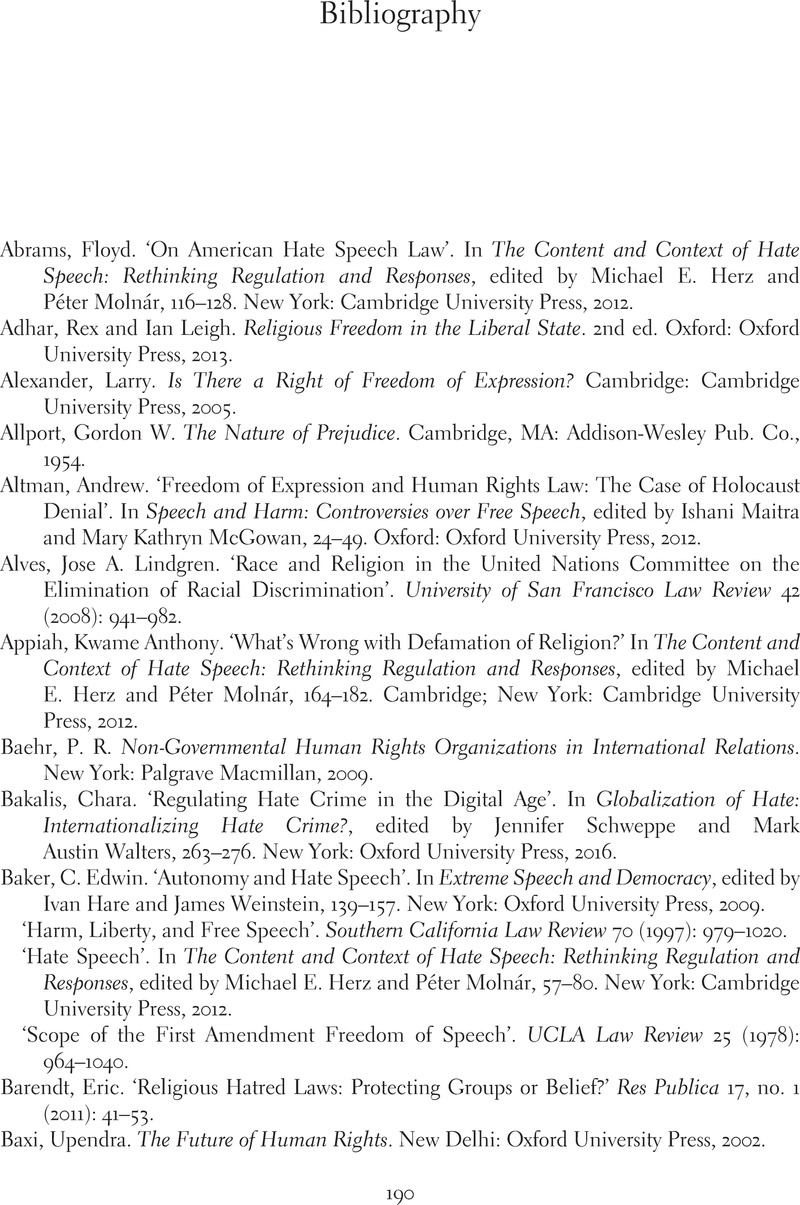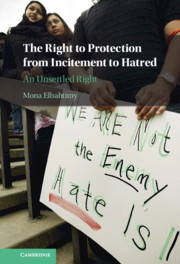Book contents
- The Right to Protection from Incitement to Hatred
- The Right to Protection from Incitement to Hatred
- Copyright page
- Dedication
- Contents
- Acknowledgements
- International Law
- International Cases
- International Materials
- Abbreviations
- 1 Introduction
- 2 The Right to Protection from Incitement to Hatred
- 3 The Difficult Birth of the Right to Protection from Incitement to Hatred in International Human Rights Law
- 4 The Norm Prohibiting Incitement to Hatred through the Lens of Supranational Monitoring and Adjudicatory Bodies
- 5 Recent Normative Battles within the UN on Hate Speech
- 6 Conclusions
- Bibliography
- Index
- References
- The Right to Protection from Incitement to Hatred
- The Right to Protection from Incitement to Hatred
- Copyright page
- Dedication
- Contents
- Acknowledgements
- International Law
- International Cases
- International Materials
- Abbreviations
- 1 Introduction
- 2 The Right to Protection from Incitement to Hatred
- 3 The Difficult Birth of the Right to Protection from Incitement to Hatred in International Human Rights Law
- 4 The Norm Prohibiting Incitement to Hatred through the Lens of Supranational Monitoring and Adjudicatory Bodies
- 5 Recent Normative Battles within the UN on Hate Speech
- 6 Conclusions
- Bibliography
- Index
- References
Summary

- Type
- Chapter
- Information
- The Right to Protection from Incitement to HatredAn Unsettled Right, pp. 190 - 205Publisher: Cambridge University PressPrint publication year: 2021



